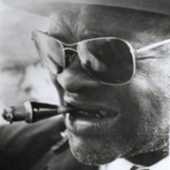Surfaces in Art Making: Ge-ology Plays Ge-ology
Surfaces in Art Making: Ge-ology Plays Ge-ology
Both records, the source material for beats of all varieties, hip hop, IDM and otherwise, as well as canvas has a distinct surface upon which an creative type’s hands are laid in one way or another. With records, when mixing them or scratching, the deejays hand lays needle to vinyl while maneuvering the record plane. Doing this in tandem with another spinning disc on an adjacent turntable is the stuff of music.
In working with a canvas, a similar plane is manipulated. Stretched to it’s natural end, the white canvas finds a painter marring its pristine condition with swipes and swoops of a brush dipped in paint. In some instances, enough paint is focused in a single area and another, raised plane replete with texture emerges.
The outcome of working with canvas is obviously a visual one where the end result is a manipulation of not just surface plane, but paint and other materials as well. That doesn’t sound too detached from determining the rate and frequency of a needle laying into a record.
Ge-ology, consciously or not, has figured this all out. It might have been readily apparent from a glance at his 2005 album, simply titled Ge-ology Plays Ge-ology. If it wasn’t, though, splashes of color mocking the side of a building weighted down by months if not years of spray paint peak out from the album’s cover alongside a sole, floating head, presumably the artist himself.
Even if it’s not Ge-ology, there’s enough music within the digitized grooves of that cd – another surface worth mentioning – to accurately figure this producer as a thoughtful dude. Merging some of the most chilled out musics this side of the Atlantic with computerized drum patters and the occasional soul hook resound over thirty some odd tracks. If it seems sprawling, it almost is.
Each of those disparate tracks is relatively short – most not pushing beyond the two minute mark. Thanks to hearing the “Save Me Instrumental,” which sounds as if it’d be a good fit for Aesop Rock, tracking down this entire effort become essential. It was worth the brief search. And while the aforementioned track is easily the highlight, there’s not really a bummer in the pack even when those cheeseball soul hooks kick in.



